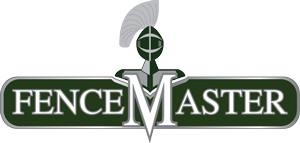
Before proceeding with your fence installation, it’s important to familiarize yourself with the necessary regulations. Compliance with local ordinances is vital for a hassle-free experience and can help avoid potential disputes.
Start by investigating zoning laws, which outline the specifics regarding the placement and height of your fence.
Various types of fences often come with distinct installation guidelines, making it essential to identify which rules pertain to your project.
Taking these proactive measures can lead to significant savings in both time and expenses later on.
Click here to learn more about: residential.html
Understanding Building Regulations For Fences: Ensuring Compliance For Safe And Effective Installation
In light of the importance of following local ordinances and zoning laws outlined earlier, installing a fence demands a thorough grasp of the construction codes enforced by local authorities. Observing these building regulations not only reduces legal risks but also contributes to the long-lasting stability and safety of your fence.
Each jurisdiction typically has specific height restrictions and construction standards that dictate the type of fences that can be erected. A comprehensive understanding of these compliance requirements can help facilitate an efficient and straightforward installation process.
Homeowner associations often enforce their own set of rules, underscoring the need to adhere to local zoning laws. This can include stipulations regarding aesthetics, approved materials, and maintenance needs, which can significantly influence your project’s direction.
Many building regulations require construction permits for fences that surpass certain heights or utilize specific materials. While navigating the permitting process may appear daunting, securing the correct project documentation is crucial for lawful installation. For example, jurisdictions frequently require boundary surveys to determine property lines accurately, ensuring compliance with safety standards and height restrictions.
Additionally, understanding the implications of setback requirements, easements, and any neighborhood regulations will aid in preventing boundary disputes with surrounding properties. Failure to comply with these regulations can lead to costly fines or the necessity to dismantle non-compliant structures. Thus, considering these factors right from the inception of your project will not only enhance compliance but also promote public safety and harmonious community standards.

How Zoning Laws Affect Your Fence: Navigating Local Requirements For Residential And Commercial Properties
Understanding building regulations and local ordinances is essential, and zoning laws also play a vital role in your fence installation project. These regulations outline specific parameters that dictate where and how you can position a fence, significantly influencing your design and options.
Each city or town has its unique site plans, which can differ greatly between residential and commercial properties. Height restrictions and placement conditions have a major impact on the aesthetics and functionality of your property.
Carefully considering property setbacks is important, as they determine the exact location of your fence and must be followed during the planning stage. Knowing these regulations will lead to a smoother installation process and help you avoid conflicts with local authorities.
Fence Installation Regulations
- Local regulations can dictate fence height and placement, affecting design choices significantly.
- Each municipality may enforce different zoning laws that impact both residential and commercial fencing.
- Property setbacks are important to ensure compliance with local ordinances during the installation process.
- Understanding local site plans can prevent potential disputes with neighbors or authorities, fostering better community relations.
Key Installation Guidelines To Follow: Best Practices For Quality Fence Construction
Preparation and Planning
Following the examination of local ordinances and building regulations, it’s clear that careful preparation is essential for effective fence construction. Evaluating site conditions, including soil type and topography, is critical as these factors significantly affect the overall integrity and stability of your fence.
Compliance with Regulations
Adhering to setback requirements set by local authorities is vital to ensure compliance with zoning laws and to avoid any future adjustments or disputes. A proper understanding of these regulations reduces conflicts and promotes harmonious relationships with neighbors.
Permits and Documentation
Incorporating proper planning for required construction permits and familiarizing yourself with the project documentation process streamlines your timeline. Opting for high-quality fencing materials designed for your environment enhances durability, while ensuring proper alignment and depth contributes to long-lasting stability.
Maintenance and Upkeep
Regular maintenance must not be overlooked, as it plays a significant role in extending the lifespan of your installation. Consistent upkeep is essential for meeting safety standards and preserving the aesthetic value of your property.
Consulting Professionals
Finally, consider engaging with local authorities and consulting with experts for guidance throughout the process. Their knowledge can provide insights into construction codes, material specifications, and drainage considerations, ultimately leading to a successful and compliant fence installation.
Local Ordinances You Should Know: Essential Rules Governing Fencing In Your Area
Understanding the rules that govern fencing in your area is vital for aligning your plans with local standards. This understanding emphasizes the significance of local ordinances, reinforcing how following fencing regulations helps prevent potential fines or disputes.
Many municipalities set specific guidelines regarding material specifications and height restrictions for fences, key factors in maintaining community standards. Additionally, checking whether installation permits are needed in your area is essential for a successful installation process.
Residential codes often dictate the placement of fences on your property, particularly near sidewalks or public spaces. Being aware of these regulations can save you from issues later and promote a smooth installation.
Keeping the past information on installation guidelines in mind will be helpful as you ensure compliance with these local ordinances, ultimately paving the way for a successful fencing project. Adhering to set guidelines also boosts both the integrity and aesthetics of your installation.
As you move forward, accurately determining property lines is crucial. Establishing clear boundaries before installation will not only avoid future conflicts but also guarantee that your fencing aligns with neighborhood regulations, material specifications, installation permits, and residential codes.
Fencing Regulations
- Understanding local regulations can help avoid fines or disputes related to fencing projects.
- Many municipalities have specific guidelines regarding materials and height restrictions for fences.
- Installation permits may be required, depending on local laws and regulations.
- Accurate property line determination is crucial to prevent conflicts with neighbors and ensure compliance with residential codes.
Determining Property Lines Accurately: Essential Steps To Establish Boundaries Before Installation
Understanding how to define property lines effectively builds on the insights from prior discussions regarding local ordinances and the importance of installation guidelines. Accurate boundary determination is crucial for avoiding conflicts with neighbors. It also ensures a smooth fencing project.
Local regulations often impose specific rules on fencing materials. These rules can guide your choices and ensure adherence to compliance requirements.
Begin by examining your property deeds. They include legal descriptions that detail your land’s boundaries and dimensions. This documentation is crucial for establishing where your property lines lie.
Precise measurements are important not just for aesthetics. They are vital for meeting applicable residential codes and avoiding boundary disputes.
Next, check local zoning laws. This helps identify any restrictions on fence height and design. Each municipality has its own set of guidelines that may significantly differ from nearby areas.
Acquiring construction permits from local authorities is necessary before starting any fencing project. This action ensures you meet property management standards and reduces the risk of complications in the future. While gathering information on construction codes, fencing materials, and contractor licensing, confirm that you have all relevant details to make informed choices.
It is also wise to consult a professional for boundary surveys or site assessments. This ensures accuracy in your measurements. Taking these extra steps can safeguard against future legal issues and help you meet community standards.
What Boundary Surveys Involve: Understanding The Process For Accurate Property Line Determination
Building on the importance of defined property lines discussed earlier, understanding boundary surveys is essential for ensuring clarity in land ownership. This process not only prevents potential disputes but also respects the rights associated with each plot of land.
The survey process starts with a thorough investigation where surveyors gather existing property records and historical information to create a solid foundation for their findings. This preliminary research is vital in determining the accurate location of property lines.
Fieldwork is a key phase of the survey, during which exact measurements and boundary markings are established. Surveyors carefully evaluate the natural landscape to ensure that any drainage considerations are addressed, which helps avoid future problems related to water flow and land use.
Once the onsite measurements are completed, surveyors engage with property owners and neighboring landholders to share their findings. This open communication fosters a cooperative atmosphere and ensures that everyone is aware of any potential effects on their properties.
A comprehensive survey report is then compiled, detailing important elements such as the identified boundaries and any findings related to zoning laws or easements that could impact property use. Instruments like theodolites and GPS devices are crucial in this process, improving the accuracy of measurements and providing reliable data for defining property lines.
Mapping technology is also utilized to create visual displays of the surveyed area, which aids in understanding regulations such as height restrictions, environmental impact, and compliance requirements. These visual aids become valuable tools for both property owners and local authorities in ensuring that all construction guidelines, including safety standards and aesthetic approvals, are met.
Property Boundary Establishment
- Clear property boundaries prevent disputes and protect land rights.
- Surveyors use tools like theodolites and GPS for precise measurements.
- Fieldwork includes assessing natural water flows to avoid drainage issues.
- Mapping technology helps visualize surveyed areas for better understanding.
Meeting Safety Standards For Fencing: Ensuring Your Fence Is Safe And Secure For Everyone
Importance of Safety Standards
Having established the significance of clear property lines and accurate boundary surveys, understanding safety standards becomes essential in the context of a fencing project. Creating a robust barrier around your premises is vital not only for enhancing security but also for ensuring that everyone remains safe while interacting with the surroundings.
Familiarity with Regulations
Knowing safety regulations is necessary when planning a new installation or upgrading an existing barrier. These regulations are designed to ensure that your structure effectively safeguards your property and protects those who come into contact with it.
Adherence to Guidelines
Maintaining strict adherence to these guidelines can help reduce the likelihood of boundary disputes, providing peace of mind to both property owners and neighbors. Regular maintenance of your fence is equally important, as it preserves its integrity over time and supports safety efforts.
Components of Safety Regulations
Safety regulations for fencing encompass various components, including height restrictions and material specifications. Authorities like ASTM International provide these standards, ensuring that fences are constructed to mitigate potential hazards and promote public safety.
Compliance with Local Laws
Compliance with these directives not only enhances the security of your property but also instills confidence among neighbors and passersby. Local ordinances may impose specific requirements for barrier installation, such as project documentation, utility locates, and the management of maintenance needs to avoid unforeseen issues. Additionally, consulting local authorities about any boundary disputes and adherence to community standards can prove invaluable.
Homeowner Associations and Aesthetic Guidelines
Furthermore, homeowner associations often establish aesthetic guidelines and restrictions, which can significantly influence the installation process. Understanding these expectations aids in creating custom designs that align with neighborhood regulations while still meeting safety standards. As you navigate the complexities of fencing regulations, being aware of legal mandates and ensuring proper inspections will contribute to a successful fencing project.
Navigating Construction Permits Effectively: A Guide To Obtaining Necessary Authorizations For Fence Projects
Having established the significance of safety standards and local regulations in previous discussions, understanding the necessity of securing construction permits is equally important for your fencing project. Familiarizing yourself with local ordinances ensures that your installation not only meets legal requirements but also prioritizes public safety.
Each locality has unique rules that dictate when authorizations are needed for specific fencing styles, particularly those requiring custom designs. Failing to follow these regulations can result in unexpected fines or complications down the line.
Aesthetic approvals often play a vital role in the installation of unique fencing options. Engaging with homeowner associations can clarify these expectations, helping you create a fence that aligns with community standards while fulfilling safety needs.
Allocating time to thoroughly research zoning laws and compile necessary project documentation allows for a smoother approval process. This diligence can help avoid potential penalties that often arise from oversight.
No project can proceed without considering height restrictions set by local authorities. Being aware of these limitations early in the design phase helps prevent issues as construction progresses and ensures compliance with safety standards.
Fence Project Regulations
- Local regulations vary significantly, requiring homeowners to check specific guidelines for their area.
- Construction permits are often required for certain fencing styles, particularly custom designs, to ensure compliance with local laws.
- Aesthetic approvals may be necessary for unique installations to avoid future disputes or complications.
- Understanding height restrictions can prevent unexpected fines and ensure the project adheres to local safety standards.
Are There Height Restrictions For Fences: Understanding Local Regulations To Avoid Fines
When planning a fencing project, it is vital to understand the height restrictions that apply in your area. Complying with local laws regarding these structures is essential not just for aesthetics but also to avoid fines and penalties.
Ignoring these regulations can result in costly adjustments or even the removal of your newly installed fence, which can negatively impact your property investment. Local authorities establish specific requirements through zoning laws and homeowner associations that dictate allowable fence heights, installation guidelines, and materials used.
Before starting your project, it is wise to research these local ordinances. Height limits for fences can differ widely based on location, type of fence, and factors like property lines. For example, front yard fences often have stricter height restrictions and landscaping rules compared to those in backyards. Furthermore, properties in historical districts may have special guidelines related to materials, aesthetic approvals, setback requirements, and project documentation.
Understanding the rules that govern these height restrictions is crucial for a smooth installation process. Consulting with local authorities and community standards can provide clarity on height limits and related regulations, ensuring compliance with safety standards. This careful approach enhances public safety and fosters neighborhood cohesion, ultimately protecting your investment in the property.
Importance Of Compliance Requirements In Fencing: Why Adhering To Standards Is Crucial For Property Owners
Understanding Local Regulations
Building on the previous discussions about local regulations and height restrictions, it is clear that establishing a secure perimeter around one’s property goes beyond mere aesthetics; it represents a commitment to safety and community respect. By adhering to relevant regulations, property owners can ensure that their fencing meets appropriate standards, which can significantly impact their investment.
The Need for Thorough Research
Conducting thorough research regarding compliance requirements is essential for preventing potential fines and maintaining community standards. Investigating aspects such as zoning laws and aesthetic guidelines allows homeowners to design fences that align with local expectations while respecting the surrounding environment.
Benefits of Professional Help
Partnering with experienced professionals not only facilitates accurate project estimates but also takes all compliance aspects into account, minimizing any risk of legal mandates being overlooked. This knowledge enhances not just the physical security of your space but also contributes to the long-term value and appeal of your property.
Navigating Issues Effectively
Furthermore, understanding and adhering to compliance requirements helps to address issues that may arise, such as boundary disputes or necessary easements. By prioritizing consultations with local authorities and adhering to established safety standards, homeowners can navigate the complexities of the installation process effectively.
| Aspect of Fencing | Importance |
|---|---|
| Regulation Compliance | Prevents fines and upholds community standards |
| Professional Engagement | Ensures accurate project estimates and compliance |
| Property Value | Enhances long-term value and appeal of the property |
| Height Restrictions | Critical to consult local authorities before installation |
How To Prepare Your Property For Fence Installation Fencemaster Houston
Questions To Ask When Hiring A Fence Installation Company Fencemaster Houston


